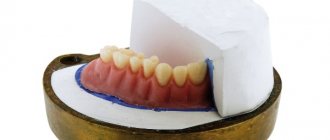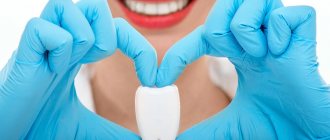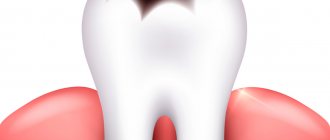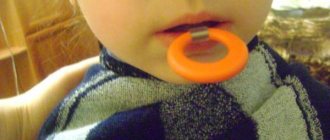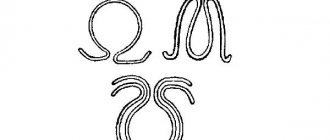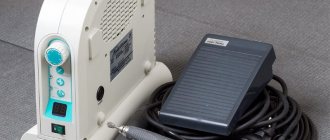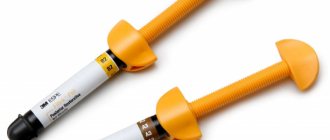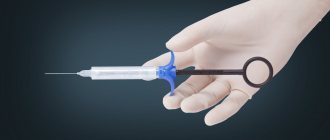3247
Correcting dental defects often requires major surgical procedures.
Restoration of bone tissue in the oral cavity and facial area after surgery is a pressing problem.
In this regard, the selection of effective drugs is very important for the successful treatment of teeth and jaw bones. One of these medications is KollapAn.
About the drug
The drug KollapAn is used for restoration of bone tissue, counteracting and treating suppuration and cystic formations.
The drug can replace damaged areas of bones, counteracts infectious phenomena for up to twenty days, uniformly providing an antibiotic effect.
The composition of the drug includes:
- synthetic hydroxyapatite;
- collagen compounds;
- active elements (lincomycin hydrochloride salts, gentamicin compounds, metronidazole, etc.).
Depending on the active element, subtypes of the drug are distinguished, which is reflected in the letter in the name. For example, KollapAna-L contains hydrochloride salts of lincomycin.
When using one or another subtype, you need to pay special attention to the active substance, since the speed of healing and the antibiotic effect, as well as the risk of developing allergic reactions, depend on its choice.
The use of antibiotics of different types and methods of action in the drug makes it possible to select the composition in such a way as to most effectively fight a particular infection and successfully suppress it.
Indications for oroantral communication plastic surgery and possible complications.
Read here about the properties and purpose of collagen membrane.
At this address https://www.vash-dentist.ru/hirurgiya/operatsii-na-zubah/koronoradikulyarnoy-separatsii.html you will find detailed information about performing coronoradicular tooth separation.
Price
The cost of the drug depends on its modification and the required volume. On average to fill:
- 0.5 cm3 of cavity requires a package of granules for 450-550 rubles;
- for 1 cm3 – from 750 rubles;
- 3 cm3 will cost 1150 rubles;
- 5 cm3 - 1800 rubles;
- 1 ml of gel will cost 1100 rubles;
- 2 ml – in 2000;
- plates, depending on volume, cost in the range from 1500 to 2500 rubles.
The manufacturer's official website offers discounts for bulk purchases of material.
In addition, the kit includes not only the material itself, but also methodological developments, i.e. detailed instructions and recommendations from the manufacturer.
Types, composition and pharmacological properties
As noted above, preparations of the collapan group differ from each other in the type of active antimicrobial substance used in their manufacture.
So:
- the letter “G” means that the composition includes gentamicin elements;
- letter “K” - substances of the claforan group;
- letter "M" - metronidazole;
- letter “P” - antibiotics of the rifampic type;
- letter "D" - dioxidin;
- the letter “I” is an isoniazidine active substance.
CollapAn, according to the type of pharmacotherapeutic group, refers to drugs that fill the cavities of jaw fragments.
Pharmacological characteristics
The medication is a fine powdery composition of hydroxyapatite elements embedded in a collagen base with the addition of an antibiotic. Collagen has unique properties.
Due to its structure, it is non-toxic, non-carcinogenic, practically does not cause allergic reactions, is fully processed by the body, binds well to the active substances of drugs and triggers restoration processes in damaged areas.
The effect of the drug is based on the fact that the active substances do not penetrate the damaged areas immediately, but throughout the entire duration of its action.
This makes it possible to gradually restore bone tissue through the formation of calcium and phosphorus ions, which are introduced into the composition of the restored bone formations and accelerate healing.
The substances that make up KollapAn become the basis for the growth of restored areas . As they dissolve, they create growth points on themselves where active biological elements settle.
This process allows the formation of a prototype of the created solid fragments by accumulating minerals. The growth occurs directly on the drug molecules.
The emerging cartilaginous base then hardens and becomes mature bone. At the same time, the features of the drug allow you to avoid complications, there is practically no intolerance, which allows you to restore significant areas of damaged bones in a relatively short time.
Antimicrobial properties combined with the gradual release of the active substance provide reliable protection against inflammation throughout the entire treatment period.
The antibiotic procedure performed reduces the risk of further development of infectious processes.
Thus, KollapAn, thanks to an integrated approach, allows you to have an effective effect on damaged areas, restoring them health and strength.
Classification of osteoplastic materials
Osteoplastic materials are implants that promote bone formation. At the same time, they provide local osteoconductive, osteoinductive or osteogenic activity. According to their origin, all osteoplastic materials are divided into four main groups:
- autogenous (the patient is the donor);
- allogeneic (the donor is another person);
- xenogeneic (the donor is an animal);
- synthetic (made from calcium salts).
Let's take a closer look at the features of each group separately.
Autogenous
Autogenous bone replacement material is used more often than others in dentistry. Autologous bone is obtained by harvesting from a donor intraoral or extraoral site and then transplanting it into a receiving site. In a number of clinical studies, it has been proven that it promotes accelerated replacement of postoperative and other bone defects with newly formed tissue. It is characterized by plasticity and does not have the properties of immune incompatibility. At the same time, the financial costs associated with its fence are small.
According to their origin, two types are distinguished - endochondral (cartilaginous) and ectomesenchymal (membrane) origin. Disadvantages include the likelihood of infection, the traumatic nature of obtaining autologous material, and the long duration of the surgical intervention itself. Often, autologous bone is used in combination with other materials, for example, allobone or xenobone. This avoids shrinkage of the autologous bone.
Allogeneic
In accordance with the legislation, allogeneic bone material is not used for sinus lifting in the Russian Federation. Allogeneic implants are osteoplastic materials that are obtained from human corpses and subsequently subjected to special processing. This may be cortical and cancellous ilium or a demineralized lyophilized bone allograft. The main advantages of this group in comparison with automaterials include:
- pronounced osteoinductive potential;
- no trauma when obtaining the material;
- good adhesion to the recipient bed;
- short duration of surgical intervention;
- good micro- and macroporous structure (guarantees rapid angiogenesis).
In addition to ethical problems, the disadvantages of using these materials include the likelihood of possible infection of recipients with HIV infection and hepatitis.
Xenogeneic
In extremely rare cases, specialists resort to the use of xenogeneic bone material for implantation. It has osteoconductive properties and preserves the original mineral structure of the bone. Xenobone (natural hydroxyapatite) is obtained from mammalian bone tissue. The structure of animal bones is identical to human bones, which allows them to be used in dental practice. Xenobone is preliminarily subjected to special treatment and deantigenization. This allows you to eliminate from its composition all factors that provoke the development of an immunological and allergic reaction.
Depending on the type of processing, a distinction is made between xenomaterials with low-temperature processing, xenomaterials with high-temperature processing and xenomaterials based on enzyme technologies. There are two main methods of deantigenization. The most effective and popular is heat treatment at elevated temperatures (about 700-1000 C°), after which all organic substances evaporate. Xenobone does not shrink. Due to the synchronicity of the processes of bone destruction and restoration, physiological replacement of artificial bone granules with natural bone occurs, without loss of volume.
Synthetic
Synthetic bone material is made on the basis of calcium salts. In particularly complex clinical cases, when it is necessary to build up large volumes of bone in the horizontal or vertical direction, xenogeneic bone tissue is combined with autogenous bone in equal proportions. Synthetics are a worthy alternative to auto-, allo- and xenomaterials. In some respects, they are superior to osteoplastic materials of natural origin (for example, there is no need to harvest bone tissue, and the possibility of infection with infectious pathologies is excluded).
The main disadvantage of most synthetic materials in comparison with auto-, allo- and xenomaterials is the lack of osteoinductive properties (the ability to cause ectopic bone tissue formation). If components are added to their composition that will stimulate bone tissue regeneration (for example, collagen), they can acquire osteoinductive properties.
Areas of application
Collapan is widely used in all areas related to the surgical treatment of bones, such as traumatology and orthopedic areas, neurosurgical procedures and surgical interventions for the treatment of the spine, elimination of suppuration and in the field of military surgery.
It is used to fill damaged areas and carry out antimicrobial treatment. To treat a specific infectious lesion, you can select a specific antibiotic included in the drug as an active substance. This allows for more effective therapy.
Surgical periodontology
During the surgical treatment of periodontal diseases , soft tissues are lifted, after which the surface is cleaned of mineralized formations of tartar, damaged fragments and bone tumors.
The doctor shapes the areas to be restored, sharp edges are processed. The operated areas are subjected to antimicrobial treatment and drying.
In areas where the fragment has failed and needs to be restored, portions of KollapAn are administered.
The video presents a scheme for the treatment of periodontitis using Kollapan granules.
Surgical dentistry
When removing teeth with complications, the remaining cavity from the root is diagnosed for dentin residues and potential bleeding, antimicrobial treatment and drying are performed.
A dose of the drug is placed in the cavity and the wound is treated. If there is a threat of alveolitis, additional procedures are performed under anesthesia, after which the damaged area once again undergoes antimicrobial therapy.
If the wound is bleeding, then Kollapan is applied and stitches are applied. In the future, the operated area does not require additional manipulations.
When truncation of a section of the tooth root and cupping of the damaged area, the resulting depression is filled with KollapAn, and blind sutures are applied. Thus, complete replacement of deleted areas with new fragments is ensured.
Dental implantation
After permanent prosthetics and implantation, damaged areas of the jaw that require rapid healing and visible parts of the dentures are treated with KollapAn.
This improves survival rate and eliminates the likelihood of developing suppuration and inflammatory processes.
When treating peri-implatitis diseases, the affected hard and soft tissues are diagnosed and cleaned. This removes inflammatory foci of the mucous membrane in the areas around the implants.
Treatment is carried out with antimicrobial agents and KollapAn, previously crushed and brought to a homogeneous state.
Sinus lifting procedures produce a serious impact on the jaw. A procedure is carried out to separate the soft tissues, the bone tissue is built up by filling it with KollapAn.
Maxillofacial Surgery
During such operations, defective areas of the facial bones are restored, and foci of infection are eliminated.
These can be either injuries or past illnesses. In this case, defects can be expressed in the presence of voids, curvatures, weakening and thinning of areas.
Therapy includes antimicrobial treatment, drying and filling with KollapAn substances.
In case of damage or puncture of the sinuses of the upper jaw, an examination is first performed, during which the degree of injury is revealed.
After this, the affected areas are removed from the cavity, the boundaries of the bone tissue located in the treatment area are processed, and treated with an antiseptic composition.
If suppuration is present, they are additionally disinfected . After this, the cavity is filled with the drug.
Stages of the operation to remove stones from the salivary gland and the equipment used.
In this article we will discuss indications for tooth reposition.
Follow the link https://www.vash-dentist.ru/hirurgiya/operatsii-na-zubah/kogda-opravdano-sekvestrektomii.html if you are interested in what sequestrectomy is and in what cases it is prescribed.
Type of osteoplasty
Below are the main types of osteoplasty to understand for which surgical interventions a specific type of material is used:
- autotransplantation. This is a procedure that involves moving a tooth from one place to another in order to fill a visually and functionally significant defect. Eighth molars (wisdom teeth) are most often transplanted. As a result of the operation, the bone tissue becomes significantly wider;
- sinus lift. This is a surgical intervention that is performed on the upper jaw in order to increase the length of bone tissue in case of its deficiency.
It is possible to increase the volume of bone tissue through the use of materials of synthetic origin. Barrier membranes are used to fix transplanted bone tissue or to protect a person’s bone tissue after a molar or premolar has been removed. Allografts are used to restore bone tissue. The most common are autografts.
Expected Result
X-ray studies show that within two to four months after using KollapAn:
- the restoration process began;
- healthy bone tissue was formed;
- defective areas were eliminated;
- within two years, signs of the disease disappeared.
When the drug is applied locally, in most patients, the damaged areas are completely replaced with a sponge-type mass.
There are practically no cases where KollapAn has no positive effect on the patient’s body.
Low effectiveness of treatment is only possible if the patient violates the doctor’s recommendations, or if the drug is used incorrectly, including an incorrectly selected antimicrobial substance.
The operated areas treated with the drug are quickly restored, there is no purulent discharge.
CollapAn can be combined with other restorative and antimicrobial medications , which can increase the effectiveness of treatment and reduce the risk of complications.
As a result, the patient can completely get rid of problems after suffering diseases of the maxillofacial region.
Cases of allergies to CollapAn, as well as contraindications due to intolerance to the drug, have not been identified.
Reviews
Recovery after surgery in the mouth and jaw is a very painful process.
Many factors can interfere with healing. Today there are many drugs on the pharmaceutical market. But from them I want to choose the most effective at an affordable price.
Those who have encountered similar problems and used drugs for treatment that restore the jaw bone (including KollapAn), we advise you to leave your feedback in the comments section.
If you find an error, please select a piece of text and press Ctrl+Enter.
Tags medicines operation
Did you like the article? stay tuned
Previous article
Purpose of Ribbon tape in dentistry and functions assigned to the product
Next article
Distalization of molars – correction of bite defects at any age
